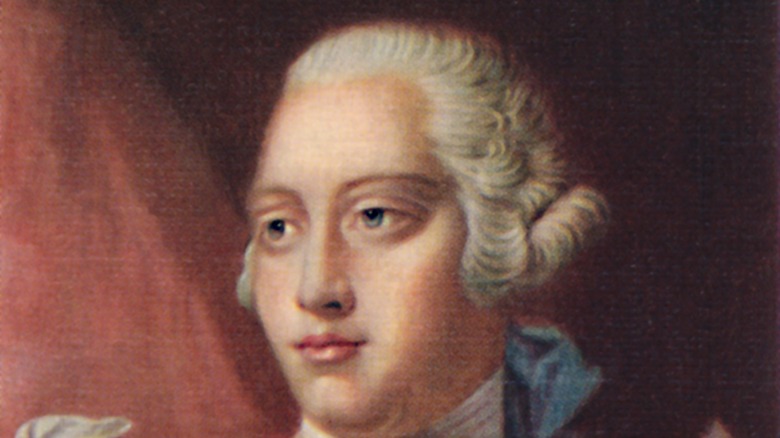How A Controversial Tax May Have Led To The End Of The Powdered Wig
There was a time in British history (and also Canadian, Australian, and American history) when men of a certain social class were rarely, if ever, seen without a wig. In particular, a white wig with beautiful curls. Those who didn't wear wigs used starch to powder their hair white (George Washington, a famed redhead, was always painted with white hair for a reason).
These days, of course, men rich and poor, powerful and ordinary, eschew wigs in favor of their natural hair. However, the tradition lives on in a couple of areas, perhaps oddly juxtaposed with modern fashion. For example, as Above The Law notes, with tongue planted firmly in cheek, British judges wear those wigs to this day, as a tonsorial symbol of the dignity and power of the legal profession. Up until 1988, so did Australian judges, according to Sydney Criminal Lawyers.
The reasons for the preponderance of wigs on wealthy and powerful men, particularly in England and its colonies, for a few centuries have to do with illness, fashion, and the realities of life in those years. And it was a tax that killed them.
Why did men wear wigs?
Before getting into a discussion about how and why (men's) wigs died, it's important to understand why they became popular in the first place.
First and foremost, fashion is sometimes inexplicable. Why did girls wear poodle skirts in the 1950s? Why were daisies all over women's and girl's pants in the 1970s? Why did people wear leg warmers in the 1980s? They were all simply fashionable at the time, and then went out of fashion.
Wigs, however, had a practical use as well. Not to put too fine a point on it, but syphilis, the dreaded STI you learned about in high school Sex Ed, ran rampant in 16th-18th centuries, according to American Battlefield Trust, and one of its symptoms was patchy hair loss. Shaving your head bald wouldn't do, as it was effectively an announcement that you were sick with syphilis. And of course, let's not discount lice.
The result of all of this was that men wore wigs, and they were generally white, kept that color with the help of starch. Men who didn't wear wigs for whatever reason (such as Washington), still went for a wig-like look, coloring their hair white with starch.
In case you're wondering, wealthy women wore wigs in those days, too, but not to the degree that men did.
A tax killed men's wigs
Fashions come and go for reasons we often can't explain. But when it came to wigs on aristocratic males, there's a specific point in history that was a nail, if not the final one, in their coffin.
According to the American Battlefield Trust, in 1795 the British government needed some money to fund its wars, and Parliament passed the Hair Powder Act, which you can read in all of its 18th-century British legalese glory here, via VlexJustis. It required anyone who wanted to purchase hair powder to purchase a stamp, costing £1.05, or about $120 or so in today's money. The hugely unpopular tax was repealed a few decades later, according to Tax Fitness, and by then, few people were wearing wigs anyway.
Of course, there were other factors at work as well. In England, according to American Battlefield Trust, wigs became synonymous with aristocracy and extravagant spending, and not in a good way. Over in France, wig-wearing aristocrats were losing their wigs, heads attached, to the guillotine. In the States, the new country began to forge its own identity. Look no further than our presidents to witness the death of the men's wig in America: Washington, though he didn't wear a wig, had a wig-like hairstyle, while the next four presidents did wear wigs. John Quincy Adams, however, unashamedly sported his bald dome, and all presidents after him have worn their natural hair.


